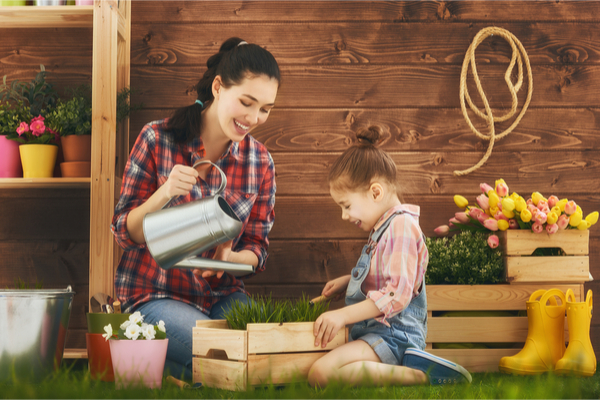Spring has sprung, and that means it’s time to go outside and get your garden growing. When it comes to planning or revamping your outdoor living spaces, remember the best gardens have the best soil and the most diverse foliage.
Healthy soil is made by adding nutrients that improve its quality. One of the best, and most cost effective, soil additives is compost. The organic materials in compost feed the soil with nutrients that plants need for overall health and vigorous growth by adding just 2 to 3 inches to your soil’s surface at least once a year (like, now). You can buy fertilizer or mulch, sure, but you can also easily make your own compost using a simple composter system. It’s great for your garden, and keeps a lot of your waste out of the landfills.
Plant in layers to add diversity to your garden. Planting in a stairstep structure, as in short, then medium, then large, helps to build beautiful wildlife habitats with a variety of plant species. Using the stairstep planting method is especially good for small spaces, where you can get in more plants and make your small area look lush. And if you don’t have a big planting area, fake it with small-medium-large pots for the same effect.
Attract butterflies, hummingbirds and bees with native plants and flowers. There are so many gorgeous options out there to fit any garden aesthetic. Do an internet search for the ones that please you. Bonus: native plants require less maintenance!
Consider a water feature for the wow factor. A water feature can provide color, a soothing zen quality that will help shut out the noise from neighbors and streets, and be a point of interest for you. It can also be an important water source for pollinators and other beneficial creatures. Just make sure you keep it clean and do required maintenance or your beautiful oasis could turn into a stinky mosquito den.
Don’t forget your vegetables. Many vegetables, like eggplant, peppers and even Swiss chard look absolutely beautiful mixed in with your floral varieties. It’s a great functional use of your space, and adding variety helps to attract pollinators. This adds to the health of your garden, and your veggies add to the health of YOU.
Save water, use mulch. Using mulch, like wood chips, around the base of your plants and throughout your landscape bed not only looks pretty, it improves soil health, suppresses weed growth, and reduces the need for extra watering.
—
Photo Credit: Yuganov Konstantin / Shutterstock.com
